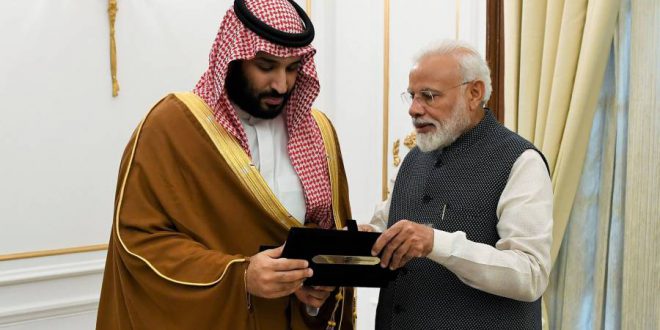The Asian tour of Saudi Crown Prince Mohammed bin Salman bin Abdulaziz buttressed Saudi Arabia’s increasing integration of the Asian economic fabric and its realization of the shift eastward of the global geo-economic order.
Crown Prince Mohammed’s visit to Islamabad reciprocated his October meeting with Pakistani Prime Minister Imran Khan in Riyadh during the Saudi investment conference. The trip held out the promise of economic support of Pakistan with more than $20 billion in business deals and delayed payments for oil imports from the kingdom.
Saudi support was just. given that Chinese investment in the China Pakistan Economic Corridor (CPEC) is under scrutiny. CPEC. a flagship project of China’s Belt and Road Initiative (BRI). promises $63 billion in infrastructure investments across Pakistan.
Khan has. however. called for a renegotiation of investment terms considering security needed to protect Chinese workers and a slowdown in the expansion of Beijing’s economic footprint in Pakistan.
Saudi economic moves on the troubled South Asian geo-economical chessboard are aimed at restoring confidence in the kingdom despite criticism of Saudi involvement in the war in Yemen and Pakistan’s refusal to join the Saudi coalition there.
Crown Prince Mohammed’s stops in China and India were not just about oil. he intended to expand cooperation with the Asian powers beyond oil exports and imports of manufactured goods to include industry and new technologies.
The visits were also designed to attract investment to develop Saudi industrial parks as well as a new space agency and deepen security cooperation. Beijing agreed in 2017 to build a drone assembly plant in Saudi Arabia. The plant allows state-owned China Aerospace Science and Technology Corporation to produce the CH-4 reconnaissance and combat unmanned aerial vehicle.
While the trip to China focused on a broad spectrum of cooperation. the visit to India showcased possible friction points related to Indian Prime Minister Narendra Modi facing elections in May.
As a result. Saudi support for Pakistan and concern that Sino-Saudi friendship could expand the “string of pearls“ near India. New Delhi sees the Gwadar port in Pakistan as a threat to the development. with Indian support. of the Iranian port of Chabahar.
The Saudis are concerned that Chabahar. as a link with India and Asia. would enhance Iran’s regional ambitions. Saudi involvement in the Sino-Pakistan cooperation is not based on common cultural or ideological values but is instead driven by pragmatic economic and security necessities.
Riyadh had hoped to mediate a reduction of Indian-Pakistani tensions following the February 14 attack in Kashmir by Pakistan-based Jaish-e-Mohammad militant group that provoked an outcry from India’s Hindus and calls for a harder stance against Pakistan and its supporters.
Crown Prince Mohammed headed to China at the personal invitation of Chinese Vice-Premier Han Zheng. While there. the crown prince and Han led the third meeting of the China-Saudi Arabia High-Level Joint Committee.
The crown prince’s meeting with Chinese President Xi Jinping was expected to showcase the leaders’ willingness to upgrade their cooperation. including Saudi backing for the expansion of BRI in the MENA region and Chinese economic and technological expertise to support the Saudis’ Vision 2030.
Saudi Arabia’s increasing economic integration with Asia is not only a reaction to its recent cold reception in the West but an acknowledgement of the shift eastward of the geo-economical order.
The West has sought for decades to secure oil resources for its own energy security. The Saudi leadership. however. recognizes the strategic necessity to diversify its international relations.
 Iran Energy News Oil, Gas, Petrochemical and Energy Field Specialized Channel
Iran Energy News Oil, Gas, Petrochemical and Energy Field Specialized Channel




